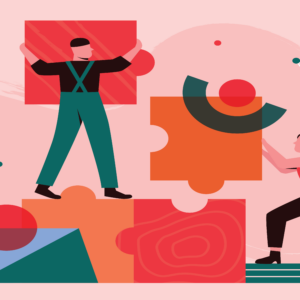Brands
The Rise of the Branded Artist — Music Makes a Comeback
Since 1999, the total revenue from US music sales and licensing have plunged from $14.6 billion to just over $7 billion last year. Though growth in digital sales and licensing revenue have helped sales climb from a $6.3 billion low point in 2009, it’s abundantly clear that the “good-old days” of music sales aren’t returning.
 So what’s a music artist to do? Turn to the nearest brand marketer, for starters.
So what’s a music artist to do? Turn to the nearest brand marketer, for starters.
The increasing coziness between music artists and brands shouldn’t come as a surprise. Brands are craving ways to create viral content and feed it directly to consumers, and music artists — with their video skills and millions of followers —provide just that. Likewise, brands are filling in the revenue gap for artists and increasingly presenting them with artistically interesting opportunities. For example, American Express Unstaged brings together popular artists with notable film directors, like this pairing of John Legend & The Roots with Spike Lee.
Without a doubt, brand-artist relationships have escaped the confines of the commercial, but even commercials are getting more fulfilling for artists to make. Lady Gaga’s viral Chrome commercial, for example, is as much about Gaga’s connection to fans as it is about Google’s browser.
“When I started in this business, partnerships with brands was a dirty word,” recalled Bruce MacKenzie, general manager for Green Light Music, at a Talk NYC event Tuesday night that focused on the growing partnerships between artists and brands. “Michaelengelo had a sponsor — it was the Catholic Church, but he had a sponsor. Somewhere in the rock n’ roll era, it became a dirty word. But now we’re in an era where artists can use AmEx as a platform to build their brand.”
Undoubtedly, it appears music artists are thinking about brand partnerships differently. While they may have used to think “sell out” while discussing brand partnerships, now, they’re thinking “opportunity.”
“[Music artists] are entrepreneurs in their own right,” MacKenzie said.
In addition to big, splashy video series, branded content partnerships can be much more subtle. When Beyonce made an early public appearance as a new mom with baby Blue Ivy strapped into a Baby Bjorn carrier, it was actually part of a partnership between Beyonce and Baby Bjorn. Baby Bjorn likely got their money’s worth, as Beyonce’s carrier-of-choice made headlines on parenting blogs across the country. Earlier this week, Pespi and Beyonce announced a $50 million partnership.
One struggle that remains for brands is getting this quality branded content in front of consumers. In partnership with the NFL, Pepsi recruited artists to create custom tracks for their favorite teams, like Wiz Khalifa’s Steeler Nation remix of Black & Yellow. The campaign invited fans to head to Pepsianthems.com to download the tracks, but then, they realized that it was silly to keep the content within Pepsi’s walled garden and away from the places where people usually download music.
“A few weeks ago, Pepsi asked us if we could put the anthems on iTunes and Spotify,” said Camille Hackney, SVP brand partnerships and commercial licensing at Atlantic Records, at the Talk NYC event. “If you’re trying to give away content, you should have a presence on popular digital services.”
Image courtesy of little birdie/shutterstock
Related articles
Get better at your job right now.
Read our monthly newsletter to master content marketing. It’s made for marketers, creators, and everyone in between.






